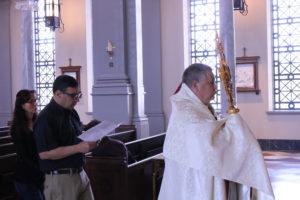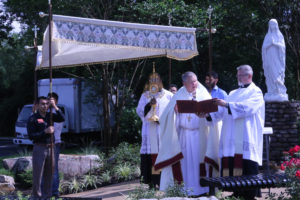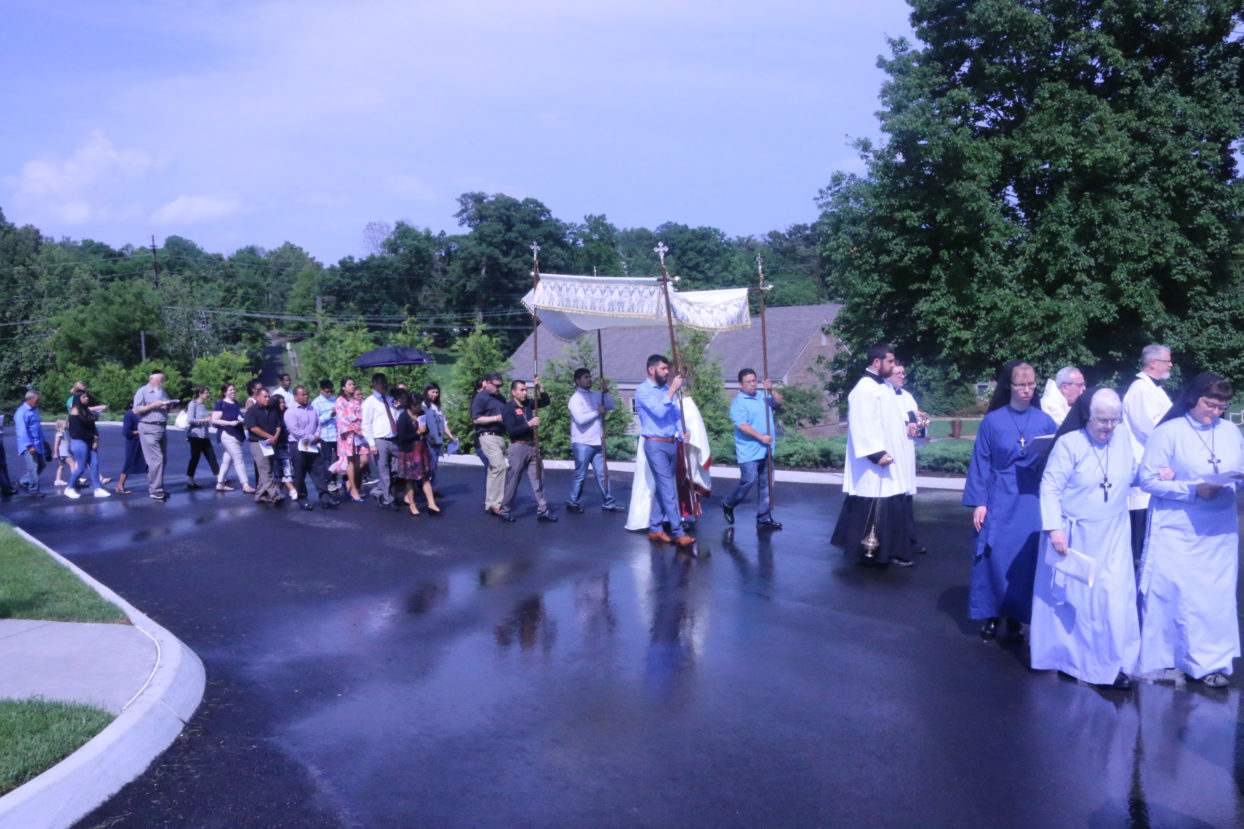By Dan McWilliams
Rain stopped in time for the diocese to have its first Corpus Christi procession at the new Cathedral of the Most Sacred Heart of Jesus on June 3.
 Bishop Richard F. Stika presided on the solemnity of the Most Holy Body and Blood of Christ. Rainfall that ended just before Mass threatened to alter the plans for the procession.
Bishop Richard F. Stika presided on the solemnity of the Most Holy Body and Blood of Christ. Rainfall that ended just before Mass threatened to alter the plans for the procession.
“Here in our midst, in this cathedral . . . we wish to see Jesus, and we do,” the bishop said in his homily. “But unlike other faith traditions, it’s not symbolic. When we leave this cathedral, Jesus is still here, in the tabernacle.”
The bishop defined a procession.
“What is a procession?” he asked.
“It’s a holy parade, perhaps.” Bishop Stika also denoted what is carried in the procession.
“But for us, when we participate in this procession, we don’t carry a statue or an image . . . we process with Jesus,” he said.
 The procession at the end of Mass began outside the cathedral doors, moved around the building to the Marian statue on the south side, and returned to the base of the front steps before continuing back inside to the cathedral altar.
The procession at the end of Mass began outside the cathedral doors, moved around the building to the Marian statue on the south side, and returned to the base of the front steps before continuing back inside to the cathedral altar.
“What a gift we celebrate this day as we honor the sacred body and blood of our Lord Jesus Christ,” the bishop said.
In his Apostolic Letter Mane nobiscum Domine (“Stay with us, Lord”) for the Year of the Eucharist, October 2004–October 2005, Pope St. John Paul II recommended that Catholics participate in a procession on the feast of Corpus Christi and taught “Our faith in the God who took flesh in order to become our companion along the way needs to be everywhere proclaimed, especially in our streets and homes, as an expression of our grateful love and as an inexhaustible source of blessings,” as reported in the National Catholic Register in June 2017.
The custom dates back to the feast of the Blessed Sacrament established in 1246 by the bishop of Liege, Belgium, after Jesus told St. Juliana of Mont Carvillon she was to promote it. By 1264, Pope Urban IV extended the feast to the whole Church. St. Thomas Aquinas composed the office.
Jesuit Father Francis X. Weiser in his Handbook of Christian Feasts and Customs relates that in the early 14th century the custom began of carrying the Blessed Sacrament after Mass through the town in a beautiful procession. Popes encouraged it and granted indulgences, then the Council of Trent “solemnly approved and recommended the procession of Corpus Christi as a public profession of the Catholic faith in the real presence of Christ in the Holy Sacrament.”

